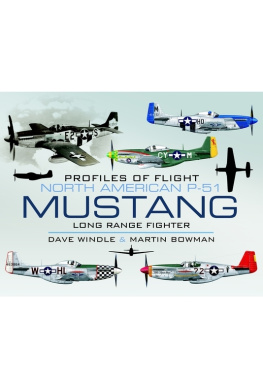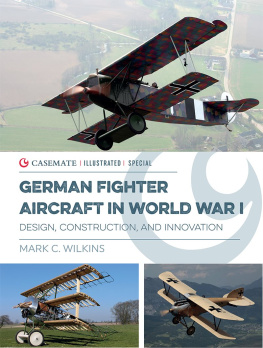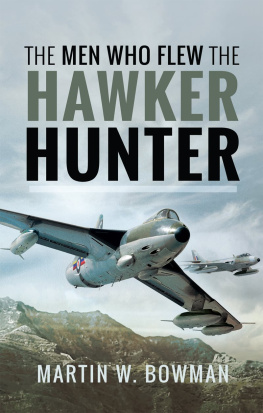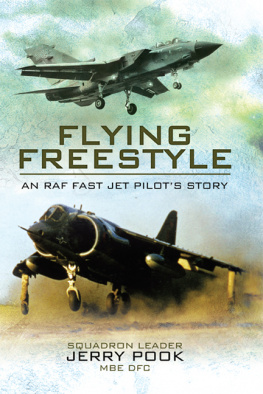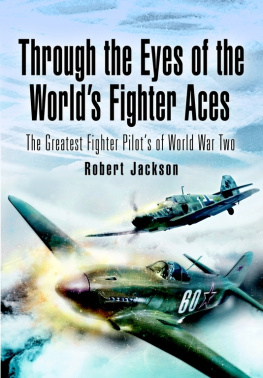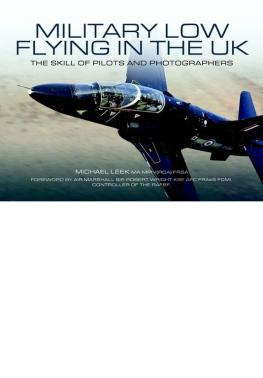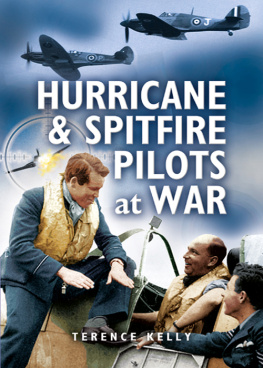Hawk T.1A XX205 armed with 30 mm ADEN cannon pod on the centre-line and a pair of AIM-9L Sidewinder AAMs under the wings. The Hawk T.1A modification programme for eighty-nine aircraft was completed in May 1986. (BAe)

First published in Great Britain in 2010 by
PEN & SWORD AVIATION
An imprint of
Pen & Sword Books Ltd
47 Church Street
Barnsley
South Yorkshire
S70 2AS
Copyright Dave Windle & Martin W. Bowman, 2010
9781783461165
The right of Dave Windle & Martin W. Bowman to be identified as Authors of this work has been asserted by them in accordance with the Copyright, Designs and Patents Act 1988.
A CIP catalogue record for this book is
available from the British Library
All rights reserved. No part of this book may be reproduced or transmitted in any form or by any means, electronic or mechanical including photocopying, recording or by any information storage and retrieval system, without permission from the Publisher in writing.
Printed and bound in Thailand
By Kyodo Nation Printing Services, Thailand
Pen & Sword Books Ltd incorporates the Imprints of
Pen & Sword Aviation, Pen & Sword Family History, Pen & Sword Maritime,
Pen & Sword Military, Wharncliffe Local History, Pen & Sword Select,
Pen & Sword Military Classics, Leo Cooper, Remember When,
Seaforth Publishing and Frontline Publishing
For a complete list of Pen & Sword titles please contact
PEN & SWORD BOOKS LIMITED
47 Church Street, Barnsley, South Yorkshire, S70 2AS, England
E-mail: enquiries@pen-and-sword.co.uk
Website: www.pen-and-sword.co.uk
ACKNOWLEDGEMENTS
I am indebted to Bernard Noble and his son Kevin Noble for their kind permission to adapt material from Noble Endeavours (Three Generations of RAF Pilots) (1998), which details the varied and successful careers of both these remarkable RAF pilots. The vivid descriptions of Hawk training have been adapted from this family bible. Bernard joined the RAF as an apprentice in 1946, and was a serving RAF officer until retirement in 1994 with the rank of squadron leader. Kevin Noble became a Jaguar pilot in RAF Germany, and this period of his remarkable career is featured in SEPECAT Jaguar: Tactical Support & Maritime Strike Fighter by Martin W. Bowman (Pen & Sword 2007). His later career on the Panavia Tornado is also featured in the Profiles of Flight series. At the time of writing Kevin is a 747 commercial airline captain with British Airways.
Hawk T.1A XX309 at the October Air Show at Duxford in 2005. (Author)
BRITISH AEROSPACE HAWK
While the Hawk may not have either the classical elegance of the Hunter or the nimble agility of the Gnat, wrote one senior RAF training officer and former Red Arrows pilot, the Hawk is a very versatile aircraft and effective advanced trainer. Air Staff Target (AST) 362 was issued in 1964 for a new high-performance trainer to replace the Hawker Siddeley Gnat and the Hunter T. 7, as well as certain Jet Provost roles, in service with the Royal Air Force. At that time the requirement was only partially filled by a small number of two-seat SEPECAT Jaguar aircraft. The decision was taken to abandon the idea of a high-performance trainer, and the requirement changed to that of a subsonic aircraft. In 1968 Hawker Siddeley Aviation Ltd at Kingston-on-Thames and Dunsfold, Surrey, a company with a vast experience of building military training aircraft, initiated studies for such a trainer, and the companys private venture P.1182 (later HS.1182) evolved into an advanced trainer formalised as AST 397 in January 1970. In October 1971 Hawker Siddeley emerged successful from a Ministry of Defence competition with a project known as the HS.1182, and in April 1972 it was awarded a production contract for a total of 175 Hawk T.1s. There were no prototypes or pre-production aircraft, five of the six aircraft used for flight development being scheduled to be refurbished for delivery to the RAF as part of the production order. The last of these was delivered to the RAF on 17 March 1982, the last production aircraft (XX353) having been handed over on 9 February that same year.
A Hawk T.1 of 4 FTS RAF Valley, passing the Menai Bridge. (MoD)
Six Hawks flying in formation as Farnborough 76 opened. The second aircraft in formation is the civil-registered company demonstrator, G-HAWK (ZA101), making its public debut at Farnborough. (Hawker Siddeley)
The design team opted for a simple but robust low-wing layout for an aircraft of modest dimensions, though much larger than the Gnat, and powered by a Rolls-Royce/Turbomca Adour Mk 151-01 low-bypass turbofan engine rated at 5,200 lb. In reheated form, two of these engines powered the Jaguar strike/attack aircraft, but the 151-01 is unaugmented. Hawk construction is entirely conventional: the fuselage incorporates skin, stringer and frame components; the one-piece wing is attached by three bolts on each side, which places the associated structure under compression for integral strength; inboard of the kink in the leading edge, the wing encloses an integral fuel tank and pick-up points for the main landing-gear units; and three hard-points (one under the fuselage and two under the wing) were fitted as standard on RAF machines. The wings hydraulically powered ailerons and three-position, double-slotted flaps are complemented by an air brake below the rear fuselage. Historically, the Hawk was the first British aircraft to be designed from the outset using the metric system of measurement. It was also the first British tandem-seat trainer to offer the ideal forward visibility for the instructor in the high-mounted rear seat, well above the pupil in the front seat, to provide him with excellent forward fields of vision.
The first Hawk T.Mk 1 (XX154) was rolled out at Dunsfold on 12 August 1974, and it flew for the first time on 21 August. Subsequently, it appeared at the Farnborough Air Show the following month. The second aircraft (XX157) flew on 22 April 1975. Flight testing demonstrated that the Hawk exceeded all its performance requirements: although supersonic performance was not specified, XX154 reached Mach 1.04 in a shallow dive on 26 February 1975. The new aircraft would be red lined at Mach=1.2 thanks to careful wing design. (Despite having two engines to the Hawks one, the Franco-German Alpha Jet is limited to speeds below about Mach=0.9.) The first Hawk T.Mk 1 (XX161) was delivered to RAF Valley on the Isle of Anglesey on 1 April 1976, where the Hawk would supersede the Gnat at No. 4 Flying Training School (FTS), but it was not until 4 November 1976 that same year that the next two aircraft were officially handed over. At No. 4 FTS students began a total of seventy-five hours dual and solo instruction on the new aircraft. At least ten hours in the advanced training syllabus was eliminated by removing the need for the Hunter in its advanced weapon training role, as the Hawk was able to undertake the weapons phase previously handled by the Hawker Hunter. Valleys initial course of pilots graduated in November 1977.


